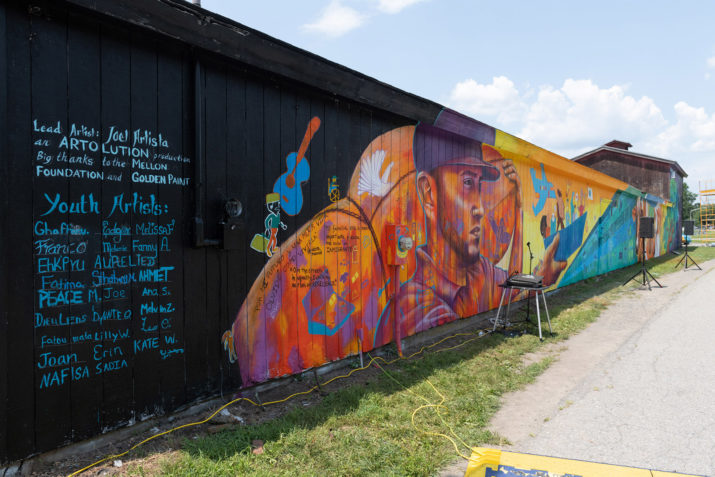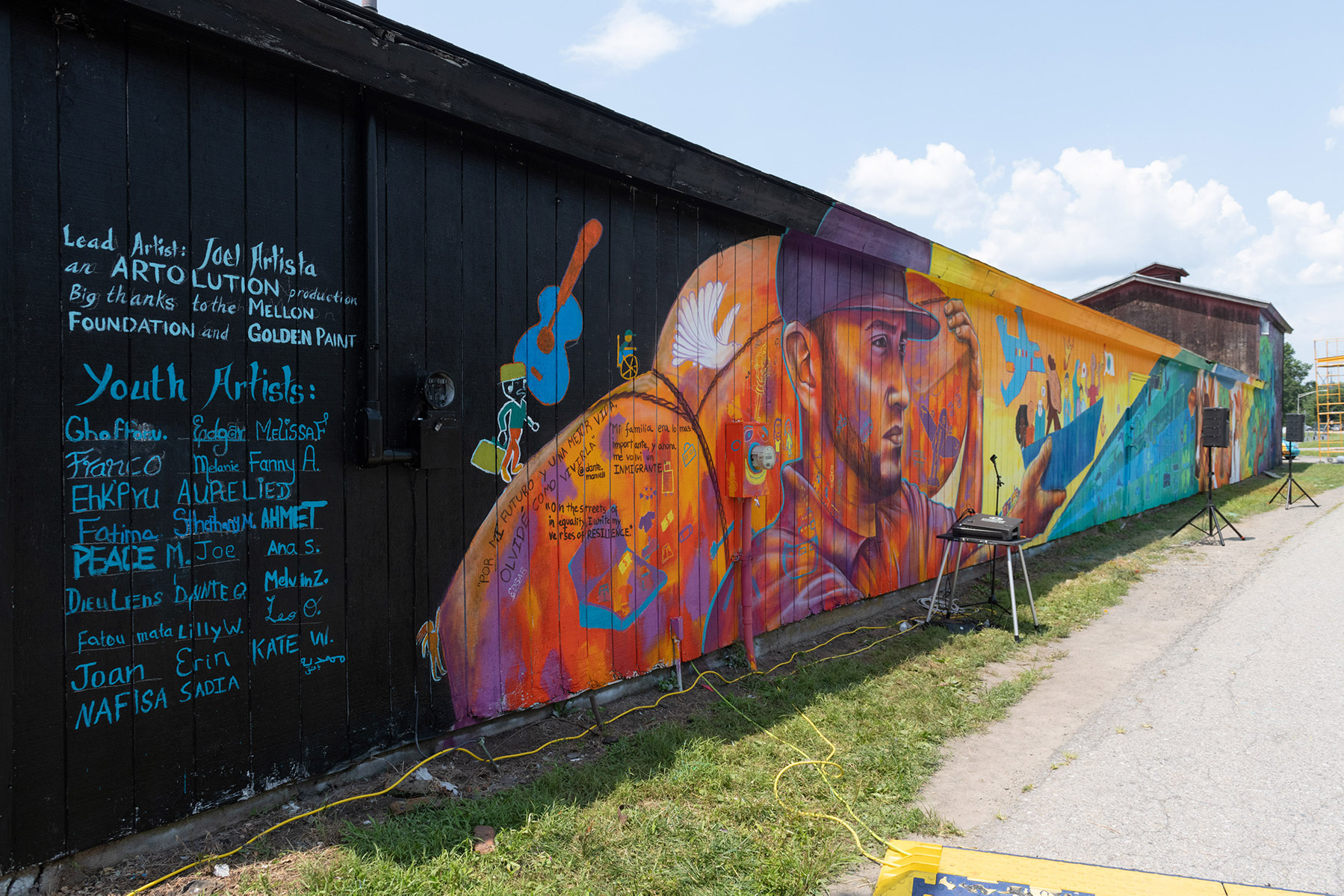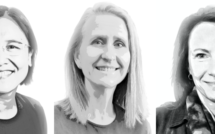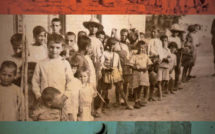
Displaced Students and Higher Education Access: Reflections from Vassar College

This is part of our special feature on forced migration, Narration on the Move.
This is part of our campus spotlight on Vassar College.
In July, eighteen high-school students from a dozen countries lived for two weeks at Vassar College, taking classes and learning about higher education opportunities and the liberal arts. The “New Americans Summer Program” was proposed and developed by Vassar Professor Maria Höhn and Director of the Vassar College Urban Education Initiative (VCUEI) John Bradley as the college’s “signature project” in the Andrew W. Mellon Foundation-funded Consortium on Forced Migration, Displacement, and Education. Vassar has other programs meant to expand access to selective colleges such as Vassar in marginalized and underserved groups: Exploring College, Exploring Transfer, Posse, and the Vassar–Dutchess Community College Scholars Transition program, several of which run during the summer. There was overlap in the demographic characteristics and backgrounds of students in all the programs, but the “New Americans” program was created specifically for high school students who have experienced forced migration and have arrived in the United States in the last few years. One major goal of the program is to introduce the students to liberal arts colleges — and the many possible avenues of study — as well as to help them prepare to apply to whichever type of higher education institution they choose, and be in a position to succeed once they get there.
With this goal in mind, the program inserted itself into the American landscape of unequal higher education access and opportunity. The phrase “access to higher education” has become shorthand for many intertwined concepts and goals: socioeconomic advancement, puncturing bubbles of privilege, and the chance to learn about one’s passions, to name just three. Some of these meanings tend to fade into oft-uttered abstractions. The “New Americans” program was an opportunity to engage with these issues more concretely.
“Access” implies that the problem of unequal opportunity in the US is a spatial one. Institutions erect barriers — test scores and sticker prices being two of the most prominent — and once aspiring students find a path through these barriers and enter the collegiate sphere, they gain access to the knowledge, connections, and opportunities they seek.
Space, and how resources are distributed across places and institutions, is indeed crucial to how inequality is produced and reproduced in the United States Nationwide, high-achieving, low-income students tend to “undermatch” by not applying to selective schools whose qualifications they meet in favor of less selective institutions. Selectivity is not a definitive barometer of quality, but “undermatched” students tend to graduate at lower rates or experience a host of other negative outcomes including higher debt burdens and lower salaries after graduating.[1] Many students who avoid “undermatching,” tend to concentrate on large research institutions, overlooking small colleges that can offer close relationships with faculty mentors. The scholarly consensus is that low-income and minority students benefit from the resources clustered in the rarified spaces of highly selective universities: extensive networks of wealthy alumni, funding for internships, cutting-edge lab equipment, etc.[2] Based on this evidence, the spatial quest to enter selective universities and liberal arts colleges is a valuable one, including for migrant students.
This is especially true given that students forced to flee their homes often face particular educational challenges when they arrive in the US The two biggest challenges that the “New Americans” students seemed to have faced in their lifetimes were: limited access to schooling based on ethnicity, gender, geographic location, violence, or other factors; and the necessity of learning new intellectual concepts in a new language and foreign environment. Therefore, the resources held within the privileged space of Vassar can indeed be helpful to students looking for support in reaching their educational goals. Dedicated peer tutors, one-on-one attention from professors, access to a well-funded career office with connections to alumni/ae networks and funding for internships and research opportunities can all be put to excellent use serving migrant students and other students who have not attended well-resourced schools in the past. Of course, the mere fact of stepping across a landscaped line and onto the campus grounds cannot counteract undermatching or other forms of inequality. It is what happens at the college, how opportunities and resources are made available to students, that counts.
To that end, Vassar’s relationship with the “New Americans” program students has not ended, even though the program concluded over the summer. Professors and counselors from the program are maintaining relationships with the students to offer counsel, feedback on college essays, or letters of recommendation. The students are no longer in the physical space of Vassar, but we are trying to ensure that the college’s resources, so crucial to the success of the program and the project of higher education access, do not slip out of the students’ grasp entirely.
Lest we slip into a needlessly rigid and quantified view of what educational resources can mean to a student, we should remember that an equally important factor in students’ intellectual and personal development is a sense of belonging at their institution: a feeling of calm purpose and focused growth that gives them the confidence to pursue their studies to the best of their abilities. One of the most gratifying parts of my role as head counselor was watching the students grow more and more comfortable at the college.
When the students arrived on the first day of the program, that sense of belonging was elusive. The majority of them stuck to the paths when walking across campus, limited themselves to the main floor of the library during study time. They seemed subdued and perhaps awestruck by Vassar’s campus — the sumptuous library, the tree-lined quads, the feeling of privilege. These feelings are not uncommon for new students, but were perhaps exacerbated for these particular students since, for many of them, it was their first time living away from home in the US, or living in a dorm setting, or being at a primarily white institution (PWI) with financial resources like Vassar’s. They had to locate the halal food at the dining hall, navigate gender-neutral bathrooms in classroom buildings, make sure their mental and physical health needs were met — all in a second (or third or fourth or more) language.
Regardless, the students made a home for themselves, slowly at first, and then so quickly and irrevocably that it was easy to forget they had only unpacked their suitcases a few days before. The dorm was a temporary home, since the program was only two weeks, but that was impossible to tell from walking through the common spaces. A poster announcing the last-night-of-the-program talent show hung on the wall, a partially dealt Uno deck sprawled across a table, and music played more often than not, during study sessions and social time alike: signs of community and ease. They cut across the grass, laughed louder in the dining hall, spoke with conviction in class, and counseled each other on group projects, homesickness, and everything in between.
It was crucial to the academic success of the summer that the faculty and student counselors spent time thinking about how to make the students feel welcome at Vassar. It is difficult to expect students who question their right to enter a college classroom — and even their right to be in the US amid the current discourse around migration — to embrace speaking up in discussions and taking provocative stances in essays, activities that foster intellectual progress. What it comes down to is that we are not able to make our students feel as welcomed and comfortable in the United States as we would like, but we can make Vassar an intellectual and social haven — a sanctuary, if you like — for students to think and prepare for the future. For example, one of the academic classes that the students took, “Stories of Crossing,” used the graphic novel The Strange, by Jérôme Ruillier, to tackle themes of migration at an intellectual remove that still allowed for students’ own experiences to shape the conversation. Professor Brittany Murray focused on students’ oral expression in class conversations, and drew out students’ writing and illustrating skills in the course’s final final project. It would not have been fair to ask students to tackle this material in an unwelcoming or indifferent environment.
In this regard, the mural about migratory journeys that the students planned and painted with the guidance of Joel Bergner of Artolution was an integral part of the program. Not only did it teach technical artistic skills, but also “soft skills” like working with a group of peers to develop a vision and execute it on a 90-foot wall over four frantic days. Together, they conceptualized the thematic anchors of the mural: dreams of a bright future, the often-harsh realities of arriving in a different place, and the struggle to make home anew. The honesty and open communication that the project demanded served students well in the classroom, where they began to revel in the exchange of ideas, demanding better work, more evidence, more productive group work from their classmates. The process of mural making was chronicled by local documentary filmmaker Jan Müller in this film.
Clearly, bringing migrant students to a college to help them plan for their educational futures cannot guarantee future success and financial wellbeing to migrant students by itself. The myth of entering the collegiate sphere as an automatic recipe for success in America for the downtrodden takes up an inordinate amount of cultural space, far beyond what the empirical data, referenced above, suggest about the benefits of (elite) college education. This line of thinking, often broadly associated with “the American Dream,” has concrete roots throughout American history, particularly in the last century-plus.
It seems a particularly American foible to think that putting people in the right place will make the problem go away. Popular wisdom has it that the physical separation of black people and white people was the fundamental problem of the era of Jim Crow segregation. The logic of the 1954 Brown v. Board of Ed. Supreme Court ruling that ended de juresegregation was that black students were harmed by not being in white schools, not that they were harmed by discriminatory lack of funding, physical violence, and cultural invalidation. The court’s solution, accepted as the best possible outcome by the public, was largely to put black students into previously all-white schools. The narrow scope of the court’s decision was simplified and imported wholesale into the realms of policy and popular opinion, diverting attention from other expressions of white supremacy such as lynching, police violence, or denial of economic opportunities.[3]
Given this history, we must be explicit about the history of the idea that access to spaces — rather than violence and systematic economic deprivation and control — determines success in life. It has its merits, but perhaps elides just as much as it illuminates. Specifically, we must be clear-eyed about why selective universities can be engines of upward economic mobility for disadvantaged students: it is a matter of resources, not any innate superiority of the dominant university culture. A recent New York Times Magazine article by Harvard Graduate School of Education professor Anthony Abraham Jack argued that higher education inclusion projects that stop at access are no good. Getting to college, and even passing classes, is but one waystation on a much longer road to stability and success for students who have experienced poverty or displacement. Universities cannot, Jack maintains, “abdicate responsibility for the problems” that low-income and disadvantaged students have faced throughout their lives and continue to face in college.[4] This is as true for the public universities that have long served as engines of economic advancement for generations of (admittedly, mostly European) immigrants as it is for small, selective, private colleges that seek to leverage their financial aid budgets to help low-income and displaced students to make up for the defunding of public universities.
Projects that would avoid this pitfall must treat young migrant individuals as equal partners, not needy recipients of skills imparted in a vacuum. The students understood that their presence was part of a give-and-take with the college. Many arrived knowing that they would have to modify certain expectations and behaviors to succeed in a residential college setting: midnight, full-volume video game sessions would have to be put on hold, the food might be unfamiliar, classes would be discussion-based and they would need to take the initiative to ask professors their questions during study time. The students also told us when they felt that certain things, like how difficult it was to access the college’s Muslim prayer space, were unfair. As one student put it, she knew she had to consider others’ comfort when thinking about her behavior, and she was happy to do so. But, she rightly added, “we deserve to be comfortable here too.” There must be a give and take. We want the students to be ready to succeed in college, but we also need the college to be ready to help the students succeed. Universities across the world have varying degrees of experience welcoming groups of migrant students and devoting the requisite resources to ensure their success (the disparity between colleges’ track records is particularly obvious in the United States). This program was an opportunity to learn new best practices for supporting young displaced scholars for the purpose of reinvesting this knowledge in next summer’s iteration of the program to continually increase the quantity and quality of the support we offer to program attendees.
Indeed, the team at Vassar learned a great deal this summer. We began the program looking to learn from the students, and did not have to look hard. The students had much to teach us, and it turned out that they were eager to do so. They had a wealth of information and perspectives about migration and representations of migrant people that they shared as we grew to trust one another. Our students were passionate climate activists, outspoken about racism, sexism, mistreatment of young people, gun violence, deportation and the precarity of life as a migrant in the US, and full of visions of a better world and how to get there. Their contributions to class discussions on these and other subjects, as happens in any good group conversation, caused me to consider new information and points of view. They had thoughtful ideas on pedagogy as well, bringing an awareness of how they learn best to discussions of how the program can best structure students’ time. Other institutions that run programs like this one can surely expect similar results and lessons learned.
We are determined to develop this program as a model for other schools, and to institutionalize it at Vassar. The struggle to help as many students as possible achieve their educational goals is a global one. The “New Americans” program was tailored to the specific environment of an American liberal arts college, but the most important lessons that we learned can resonate across different university and national contexts. Universities must engage aspiring scholars with respect for their intellectual abilities, and provide meaningful educational resources — not just a fleeting stay in a privileged space — so the students can achieve their own goals. Universities must embrace new ideas, and even challenges to their conventions, and in so doing uphold the tenets of a liberal education and exchange of ideas.
Matthew Brill-Carlat is the Coordinator of Research and Pedagogy with the Consortium on Forced Migration, Displacement, and Education. He is a recent graduate of Vassar College, where he majored in History. Born and raised in Baltimore, MD, Matthew lives in Poughkeepsie, NY.
References
Chetty, Raj, John N. Friedman, Emmanuel Saez, Nicholas Turner, and Danny Yagan. “Mobility Report Cards: The Role of Colleges in Intergenerational Mobility.” National Bureau of Economic Research, 2017.
Ge, Suqin, Elliott Isaac, and Amalia Miller. “Elite Schools and Opting In: Effects of College Selectivity on Career and Family Outcomes.” National Bureau of Economic Research, 2018 (revised 2019).
Haney López, Ian, and Michael A. Olivas. “Jim Crow, Mexican Americans, and the Anti-Subordination Constitution: The Story of Hernandez v. Texas.” In Rachel Moran and Devon Carbado, Race Law Stories. New York: Foundation Press, 2008.
Jack, Anthony Abraham. “I Was a Low-Income Student. Classes Weren’t the Hard Part.” New York Times Magazine, September 10, 2019.
Kang, Chungseo, and Darlene Garcia Torres. “College Undermatching, Degree Attainment, and Minority Students.”American Educational Research Association, 2018.
Thompson, Derek “Does It Matter Where You Go To College?” The Atlantic, December 11, 2018. https://www.theatlantic.com/ideas/archive/2018/12/does-it-matter-where-you-go-college/577816/
[1] Derek Thompson, “Does It Matter Where You Go To College?” The Atlantic, December 11, 2018. https://www.theatlantic.com/ideas/archive/2018/12/does-it-matter-where-you-go-college/577816/; Chungseo Kang and Darlene Garcia Torres, “College Undermatching, Degree Attainment, and Minority Students,” American Educational Research Association, 2018.
[2] Suqin Ge, Elliott Isaac, and Amalia Miller, “Elite Schools and Opting In: Effects of College Selectivity on Career and Family Outcomes,” National Bureau of Economic Research, 2018 (revised 2019); Raj Chetty, John N. Friedman, Emmanuel Saez, Nicholas Turner, and Danny Yagan, “Mobility Report Cards: The Role of Colleges in Intergenerational Mobility,” National Bureau of Economic Research, 2017.
[3] Ian Haney Lopez and Michael A. Olivas, “Jim Crow, Mexican Americans, and the Anti-Subordination Constitution: The Story of Hernandez v. Texas,” in Rachel Moran and Devon Carbado, Race Law Stories (New York: Foundation Press, 2008), 269, 273-75, 310.
[4] Anthony Abraham Jack, “I Was a Low-Income Student. Classes Weren’t the Hard Part,” New York Times Magazine, September 10, 2019.
Published on October 29, 2019.




